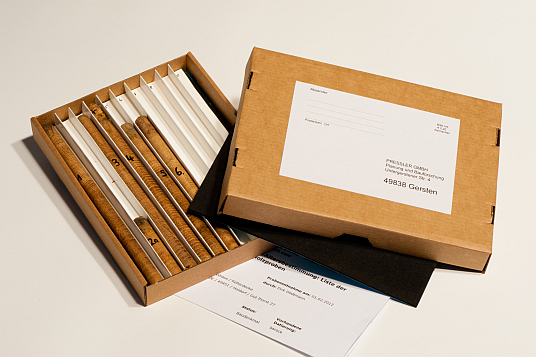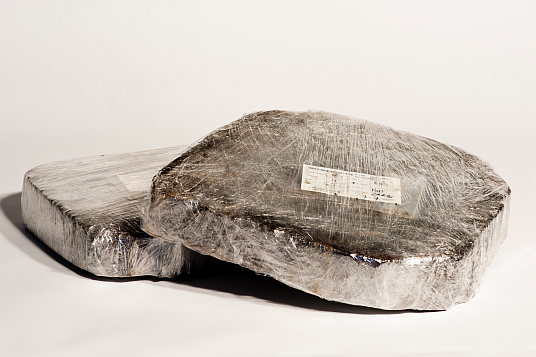Advice for sample shipping
The following suggestions will help you to keep the expenses for the documentation and shipping of samples as small as possible. Nevertheless, we strongly recommend to keep minimum requirements in mind to enable quick and sound work in the laboratory.
It even starts with sampling. Samples should be documented well and unambiguous. We are able to provide you with a standardized form you may download here. Furthermore it is possible to use our timesaving online-schedule upon request. Photographs – horizontal formats, please- complete the documentation and may be sent by email.
We are able to provide customers with a special package for the samples, which can be ordered for free. This special package should be sufficient for most sample-lengths. It has been designed in a way that no more packaging material has to be utilized in order to keep samples in the right position. So please do not wrap samples in additional material like Sellotape or even glue broken parts back on.
Samples should be numbered consecutively right at the sampling site in order to avoid mistakes. In case of samples taken from dry timbers the enumeration may be made by a felt pen. In case of samples with high moist contents, like samples from excavation sites, information should be put on plastic sheets using a waterproof felt pen for example. Please take care to fix the label to the sample thoroughly.


Apart from drill-core samples, other formats of samples can be sent to the laboratory too. Ideally these samples should be cut into full slices or segments of 3-4 cm thickness. In case of larger samples or samples preserved to their original scale, on-site collection may be arranged upon request.
Samples from archaeological sites should be cleaned carefully from coarse dirt, shortly after excavation to keep up their natural moist content. Afterwards samples should be wrapped into cling film meticulously. That will help to suppress putrefaction effects for a while.
A more or less thoroughly carried out sampling procedure can be crucial for success in dating. Apart from the choice and number of samples the customer has to keep in mind that a successful dating effort could only be made with samples containing an amount of 50 annual rings at least. Ideally sample material should consist of narrow annual rings, for experience tells us that such material can be dated much easier than samples with broad annual rings. Another crucial point for a dating to the exact year is that sapwood and wane should be preserved. If sapwood and wane should be in a bad state of preservation, we would recommend the method of sapwood-stabilization. For more information, please see here.
It is appropriate in general , to take an amount of 5-6 samples into account per object, construction phase - in case of objects with more than one construction phase-, or archaeological feature. This amount of samples serves for a better statistical funding of a successful dating, because not every sample is able to be dated, even if it is in good condition. In case of doubt, we would strongly recommend to prefer to take one more sample than to get no result.






